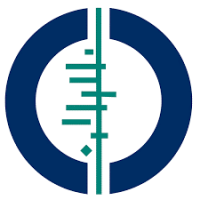
Authors: Darren Owens, Simon Watkinson, Jayne E Harrison, Sarah Turner, Helen V Worthington
Orthodontic treatment for prominent lower front teeth (Class III malocclusion) in children*
Review question
Do braces correct or improve 'underbite' (prominent lower front teeth) in children and teens?
Key messages
Non‐surgical and surgical orthodontic treatments in childhood can improve the bite and jaw position. We do not know how long these effects last.
Future studies should be long enough to discover whether treating patients in childhood prevents the need for jaw surgery in adulthood.
What is 'underbite'?
Prominent lower front teeth ('underbite') can result from the upper jaw (maxilla) being too far back, lower jaw (mandible) too far forward, upper front teeth tipped back, lower front teeth tipped forward, or a combination. Underbite may result in teasing, eating difficulties and jaw joint problems.
How is it treated?
Orthodontic treatment for underbite involves braces fitted inside or outside the mouth and fixed to the teeth, or braces fitted around the head. The braces encourage the upper jaw and top teeth to move forwards and downwards, or restrict the growth of the bottom jaw, or both.
What did we want to find out?
This review, which updates the 2013 version, aimed to find out the effects of orthodontic treatment for underbite in children and adolescents.
What did we do?
We searched for studies that compared one type of brace for underbite to another type or no treatment. We summarised their results, and rated our confidence in the evidence, based on factors such as study methods and sizes.
What did we find?
We found 29 studies, involving 1169 children aged 5 to 13 years when treatment started. Most studies lasted between 5 and 18 months, and assessed outcomes at the end of treatment. Only one study assessed outcomes after the end of treatment. The studies used a wide variety of braces, including the following types.
Facemask: rests on the forehead and chin and is connected to the upper teeth by an expansion appliance – which widens the upper jaw to create more space or correct bite problems – with elastic bands placed by the wearer. The force causes the top teeth and jaw to move forward and downward.
Chin cup: rests on the chin with a strap around the back of the head to reduce forward growth of the lower jaw.
Orthodontic removable traction appliance (ORTA): expansion appliance is placed on the top teeth. Elastic bands, placed by the wearer, run from it to a clear, removable gumshield brace on the lower teeth. The force pulls the top teeth forwards and downwards and the bottom teeth back.
Reverse Twin Block with lip pads and expansion appliance: top and bottom removable braces with an expansion screw in the top brace, blocks of plastic over the side teeth, angled to hold the bottom jaw back, and plastic pads to hold the top lip away from the teeth.
Tandem traction bow appliance: attachments are fixed to top and bottom teeth. The top attachment has a hook on each side. A metal bar is placed in the lower attachment, which sits in front of the lower teeth. An elastic band is placed on each side to pull the top jaw forwards and bottom jaw backwards.
Surgical miniplates: metal plates, fixed to the bone with miniscrews, are placed under the gums during an operation. They have a visible hook from which elastic bands are placed by the wearer between the top and bottom jaws or to a facemask.
Main results
Combining studies, we found that non‐surgical orthodontic treatments and surgical orthodontic treatment with miniplates can substantially improve the bite and the jaw relationship, immediately after treatment.
Only one study, which assessed facemask, looked at long‐term effects of braces. Improvements in the bite and jaw position were seen after three years, but appeared to have been lost by six years. Nevertheless, orthodontists judged that children who had received facemask treatment were less likely to need jaw surgery in adulthood than those who did not have this treatment. More long‐term studies are needed to find out how long orthodontic treatment benefits last.
We combined results from studies that compared facemask treatment to other treatments. This did not show the other interventions to be superior to the facemask, but there was a lot of variation in the data, so we cannot draw reliable conclusions.
There may be no advantage to securing facemasks with surgical miniplates, but the evidence is uncertain and further research is needed.
Using a facemask without an expansion appliance may work as well as with an expansion appliance. Alternating between expansion and constriction may be no different than expansion alone. However, the evidence for facemask variations is uncertain. More research is needed to determine the optimal facemask therapy.
What are the limitations of the evidence?
The studies were small and everyone involved knew what orthodontic treatment the children were receiving. Our confidence in the evidence ranged from very low to moderate. We know that non‐surgical and surgical orthodontic treatments in childhood can treat underbite effectively, but how long this benefit lasts is uncertain. Whether one orthodontic treatment is more effective than another is also uncertain.
How up to date is this evidence?
The evidence is current to January 2023.
*This is a plain language summary of a review that is published in the Cochrane Library. You can find the full report of the review here: https://www.cochranelibrary.com/cdsr/doi/10.1002/14651858.CD003451.pub3/full#CD003451-abs-0002
